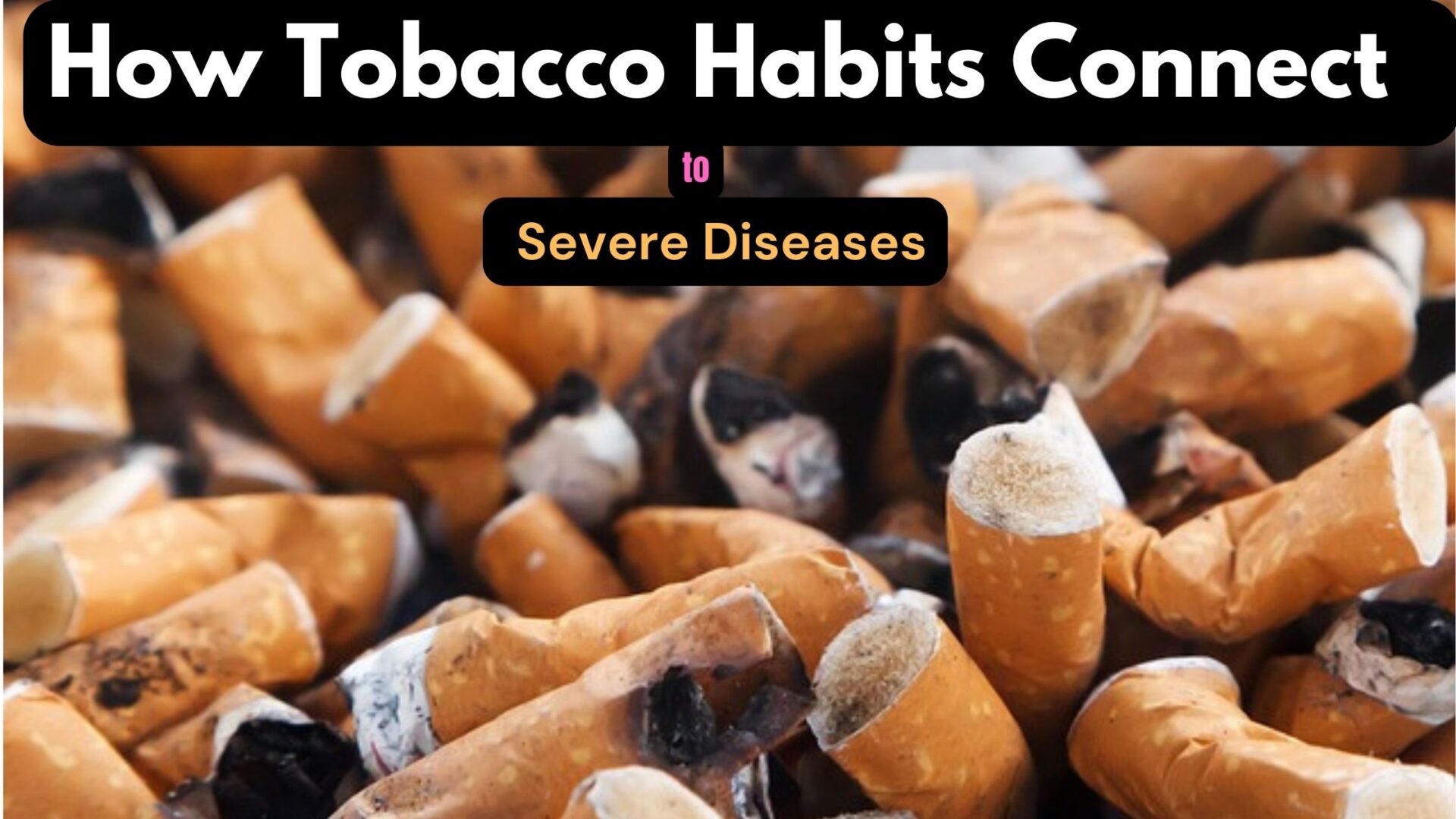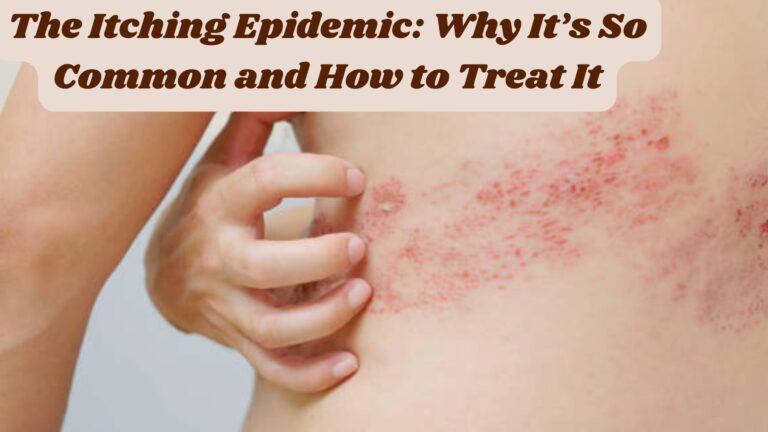Introduction:
“Unmasking the Hidden Threat: How Tobacco Habits Impact and Connect to Severe Diseases”

In a world constantly evolving, there are some habits that persist with grave consequences for health. One such habit is tobacco consumption, and the link between this behavior and severe diseases is both concerning and well-established. This article aims to delve into the intricate web of connections, unraveling how tobacco habits have a profound impact on the development of severe diseases.
What are the harmful effects of tobacco habits?
Tobacco use, in any form, is associated with a wide range of harmful effects on health. The primary active component in tobacco is nicotine, an addictive substance. Here are some of the harmful effects of tobacco:
- Cancer: Tobacco use is a major cause of various types of cancer, including lung, mouth, throat, esophagus, pancreas, bladder, kidney, and cervix. Smoking is the leading cause of lung cancer.
- Respiratory Issues: Smoking damages the respiratory system, leading to conditions such as chronic bronchitis and emphysema. It also contributes to the development of chronic obstructive pulmonary disease (COPD), a progressive and debilitating lung disease.
- Cardiovascular Diseases: Tobacco use is a significant risk factor for cardiovascular diseases, including heart attacks, strokes, and peripheral vascular disease. It can lead to the narrowing of blood vessels, reduced blood flow, and increased risk of blood clots.
- Nicotine Addiction: Nicotine is a highly addictive substance present in tobacco. Addiction to nicotine can lead to dependence, making it challenging for individuals to quit smoking or using other tobacco products.
- Reproductive Health Issues: Tobacco use can negatively impact reproductive health. In women, it has been linked to fertility issues, complications during pregnancy, and increased risk of preterm birth and low birth weight. In men, it can contribute to erectile dysfunction.
- Oral Health Problems: Smoking and using smokeless tobacco can cause oral health issues, including gum disease, tooth decay, and in severe cases, the development of oral cancers.
- Weakened Immune System: Tobacco use weakens the immune system, making individuals more susceptible to infections and illnesses. Healing processes can also be compromised in smokers.
- Secondhand Smoke: Exposure to secondhand smoke is harmful to non-smokers and can lead to respiratory problems, cardiovascular diseases, and an increased risk of sudden infant death syndrome (SIDS) in infants.
- Additives and Chemicals: Tobacco products contain various harmful chemicals and additives. When burned, these substances release toxic compounds that contribute to the overall health risks associated with tobacco use.
- Financial and Social Impact: Tobacco use not only affects physical health but also has financial and social consequences. Medical expenses related to treating tobacco-related diseases can be substantial, and the social impact of smoking can lead to strained relationships and reduced quality of life.
It’s important for individuals to be aware of these harmful effects and to seek support and resources for quitting tobacco use. Quitting smoking or using tobacco products can have significant health benefits and improve overall well-being.
How can one avoid the bad habit of consuming tobacco?
Quitting tobacco is a challenging but highly rewarding endeavor that requires commitment, support, and effective strategies. Here are some tips to help individuals avoid the bad habit of consuming tobacco:

- Set a Quit Date:
- Choose a specific date to quit, and use it as a target to prepare mentally and emotionally.
- Seek Support:
- Inform friends, family, and colleagues about your decision to quit. Having a support system can provide encouragement and understanding.
- Understand Triggers:
- Identify situations, emotions, or activities that trigger the urge to use tobacco. Develop strategies to cope with these triggers without resorting to tobacco use.
- Use Nicotine Replacement Therapy (NRT):
- Consider using NRT products like patches, gum, lozenges, or nasal spray to help manage withdrawal symptoms. Consult a healthcare professional for guidance on the appropriate product and dosage.
- Prescription Medications:
- Talk to a healthcare provider about prescription medications, such as bupropion or varenicline, which can aid in smoking cessation.
- Join a Support Group:
- Attend local or online support groups where individuals share their experiences and strategies for quitting. Peer support can be invaluable.
- Counseling or Therapy:
- Seek counseling or behavioral therapy to address the psychological aspects of addiction. Professional guidance can provide effective coping mechanisms.
- Healthy Lifestyle Changes:
- Adopt a healthy lifestyle by incorporating regular exercise, a balanced diet, and sufficient sleep. These changes can improve overall well-being and help manage stress.
- Stay Busy:
- Engage in activities that keep your mind and body occupied. This can help distract you from cravings and reduce the likelihood of relapse.
- Reward Yourself:
- Set up a reward system for reaching milestones in your journey to quit tobacco. Celebrate your achievements to reinforce positive behavior.
- Mindfulness and Stress Management:
- Practice mindfulness techniques, such as deep breathing or meditation, to manage stress and cravings effectively.
- Dispose of Tobacco Products:
- Get rid of all tobacco products, lighters, and ashtrays in your home and car to reduce temptations.
- Educate Yourself:
- Learn about the health risks associated with tobacco use to reinforce your commitment to quitting. Understanding the benefits of a tobacco-free life can be motivating.
- Be Patient:
- Recognize that quitting is a process, and setbacks may occur. Be patient with yourself and learn from any challenges you encounter.
- Celebrate Successes:
- Acknowledge and celebrate every small success along the way. It reinforces positive behavior and helps build confidence.
Remember that everyone’s journey to quit tobacco is unique. If needed, don’t hesitate to consult healthcare professionals or tobacco cessation specialists for personalized guidance and support.
Is it possible to quit using tobacco products?
Yes, it is definitely possible to quit using tobacco products. While quitting can be challenging due to the addictive nature of nicotine, many people successfully quit every day. Various resources and support systems are available to help individuals quit smoking or using other tobacco products. These resources include counseling, nicotine replacement therapy (such as patches, gum, or lozenges), prescription medications, support groups, and self-help materials. Additionally, adopting healthy habits and finding alternative coping mechanisms can also aid in the quitting process. With determination, support, and the right strategies, anyone can quit using tobacco products and improve their health and well-being.
Conclusion:
In conclusion, comprehending the intricate link between tobacco habits and severe diseases is crucial for individuals seeking to safeguard their health. By understanding the impact of tobacco on the body, one can make informed choices, break free from addiction, and pave the way toward a healthier, disease-free future. The journey begins with knowledge – the knowledge that empowers individuals to make positive changes for themselves and those around them.
FAQs
Q: What are the common tobacco products people use?
A: Common tobacco products include cigarettes, cigars, smokeless tobacco (such as chewing tobacco and snuff), pipes, and electronic cigarettes (e-cigarettes).
Q: How does tobacco use impact health?
A: Tobacco use is a leading cause of many serious diseases, including lung cancer, heart disease, stroke, and chronic obstructive pulmonary disease (COPD). It also contributes to other health problems like respiratory infections and diabetes.
Q: How does tobacco use affect non-smokers?
A: Non-smokers can also be harmed by tobacco use through exposure to secondhand smoke, which increases the risk of developing similar health conditions as active smokers, such as lung cancer and heart disease.
Q: How can I protect myself from the harmful effects of tobacco?
A: The best way to protect yourself from the harmful effects of tobacco is to avoid using tobacco products altogether and to avoid exposure to secondhand smoke. If you are a smoker, quitting smoking can greatly reduce your risk of developing tobacco-related diseases.
Q: Is it possible to quit using tobacco products?
A: Yes, it is possible to quit using tobacco products. Many resources and support systems are available to help individuals quit, including counseling, nicotine replacement therapy, medications, and support groups.
References
- World Health Organization (WHO). (2021). Tobacco. https://www.who.int/news-room/fact-sheets/detail/tobacco
- U.S. Department of Health and Human Services. (2020). Smoking & Tobacco Use: Health Effects. https://www.cdc.gov/tobacco/basic_information/health_effects/index.htm
- Centers for Disease Control and Prevention (CDC). (2020). Secondhand Smoke (SHS) Facts. https://www.cdc.gov/tobacco/data_statistics/fact_sheets/secondhand_smoke/general_facts/index.htm
- American Cancer Society. (2020). Guide to Quitting Smoking. https://www.cancer.org/healthy/stay-away-from-tobacco/guide-quitting-smoking.html








